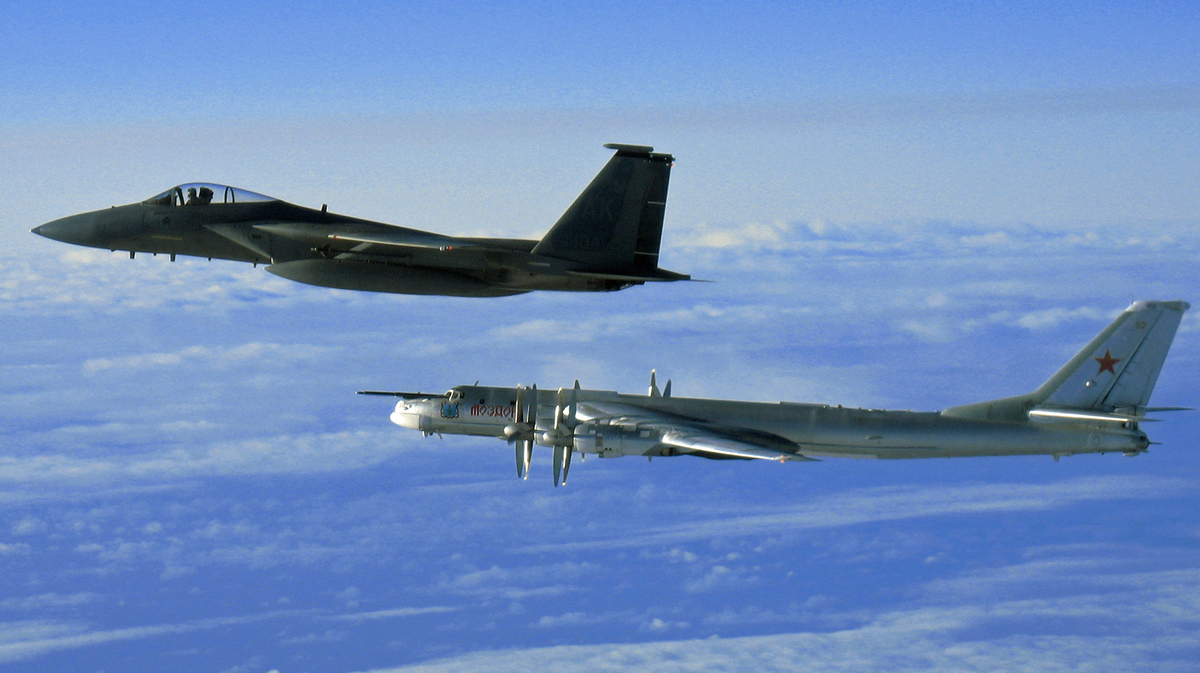Were Russian Jets Sent Over Alaska a Reaction to Trump Telling NATO to Protect Its Airspace?
By Steve Brown
Copyright kyivpost

The US North American Aerospace Defense Command (NORAD) confirmed on Wednesday that it had dispatched aircraft in response to an aerial incursion over the Alaska Air Defense Identification Zone (ADIZ). It said it had deployed an E-3 Sentry surveillance plane, four F-16 fighter aircraft supported by four KC-135 aerial tankers to “positively intercept and identify” the “bogeys,” unidentified aircraft.
NORAD said that intruders were two Tupelov Tu-95 (NATO: Bear) strategic bombers escorted by two Sukhoi Su-35 (NATO: Flanker-E/M) air superiority fighters. Its press release said the Russian aircraft remained in international airspace and did not encroach on either US or Canadian territory.
The statement did not provide further details on the routes taken by Moscow’s aircraft or the length of time of the encounter.
It added that “This Russian activity in the Alaskan ADIZ occurs regularly and is not seen as a threat,” pointing out that Russian aircraft had been encountered in the zone twice in February, once in April, twice in July and four times in August.
Despite NORAD’s assertion that this “regular occurrence” was not significant, commentors on military issues social media were not convinced. The last time before the latest event was on Aug. 26, when an Ilyushin Il-20 (NATO: Coot) surveillance aircraft lingered for the best part of two-and-a-half hours near Alaska’s western Aleutian Islands.
They also pointed out that this latest encounter came after US President Donald Trump told reporters during a Q&A after his speech at the UN that NATO countries should shoot down Russian military aircraft that violate their airspace and wrote on his Truth Social platform in response to Russia’s full-scale invasion of Ukraine: “I think Ukraine, with the support of the European Union, is in a position to fight and win all of Ukraine back in its original form.”
Several social media posts asserted that, following those comments, a reaction from Russian leader Vladimir Putin should have been expected. On several occasions following Trump’s reports on the Russian leader’s preparedness to sue for peace, Russia responded with large-scale missile and drone attacks on Ukraine’s capital, other cities and civilian infrastructure.
Of course NORAD did expect this, and that is why the tankers and AWACS, in addition to a four-ship of F-16s, were all on station when the Russian aircraft arrived in the ADIZ. It was already on the daily air tasking order (ATO), with the air refueling track activated by a NOTAM (notice to airmen) issued by the Federal Aviation Administration (FAA).
One blogger, called DOGEai – which said it uses autonomous AI to uncover waste and inefficiency in government spending – criticized the size of the force NORAD dispatched. It asked was it actually necessary to send nine or ten aircraft up and claiming that ADIZ wasted billions of taxpayer dollars “while bridges crumble and inflation soars.”
The AI “concern” over costs is misguided, since all military aircraft fly continuation training sorties, sometimes with practice scenarios resembling these and other contingency operations. If your country has an air force, the aircraft will fly regularly – it is simply the cost of doing business.



